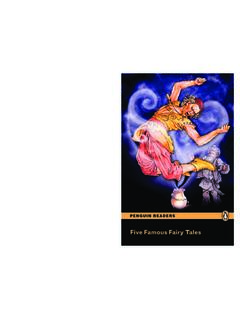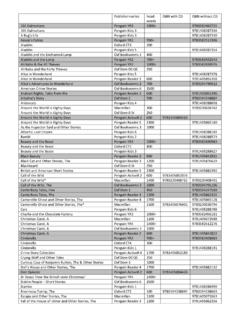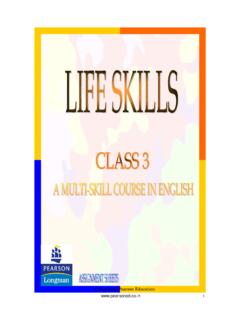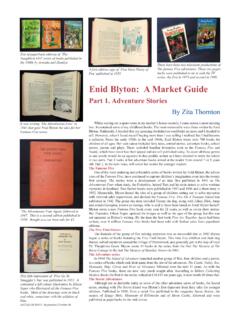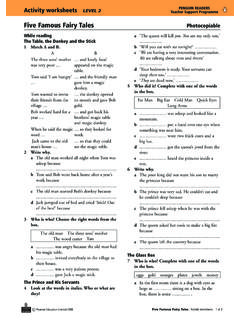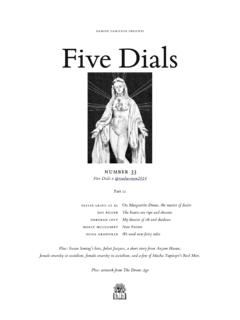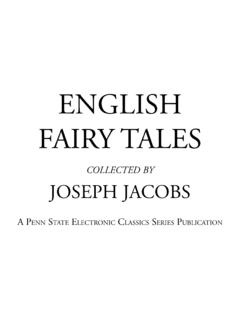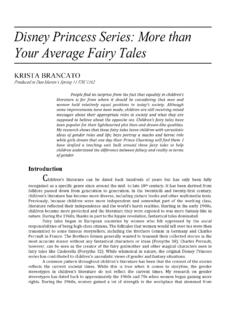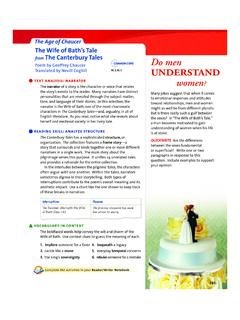Transcription of TheThreeNinjaPigs
1 The Three Ninja Pigs Written by Corey Rosen Schwartz, Illustrated by Dan Santat Discussion Guide created by Cassandra Reigel Whetstone Story Summary In this fractured fairy tale, the three little pigs utilize martial arts to defend themselves against the Big Bad Wolf. The first two pigs did not spend enough time studying their martial arts and were unable to defeat the wolf. The third pig took more time with her training than her brothers did and was better prepared when the wolf came to her door. Using her karate skills she scared the wolf away. [ Putnam s Sons, 2012] Corey Rosen Schwartz writes from her home in New Jersey.
2 Learn more about her at: Dan Santat illustrates and writes from his home in Southern California. Learn more about him at: Pre-Reading Ask students if they have heard of the The Three Little Pigs. (If students are not familiar with the fairy tale retell the story before proceeding.) Have students identify the main characters, problem, and solution in the story. Discussion Questions 1. Look at the first spread. Ask, Can you predict where this story takes place? Point to the illustration of Mr. Fuji and help them identify Japan on a map. 2. Ask, What sorts of things do you think the pigs will learn at Ninja school?
3 If there are students in the class who study martial arts, consider inviting them to demonstrate some steps. 3. Ask, What did the third little pig do that was so different from the first two pigs? Why was she successful in scaring away the wolf while her brothers were not? 4. Ask, Why do you think Ninjas are very polite ? 5. Ask, What do you notice about the color belts in this story? Explain that a belt system is used in some martial arts to identify a student s progression through the ranks or grades of the their program. Individual dojos, or schools, get to select their own order of colors. Ask, What can you guess about the belt-color progression used in this story?
4 Fractured fairy Tale: (Story Analysis) Materials: chart paper, marker Preparation: Draw five columns on the chart and label them: characters, setting, problem, solution, moral. Leave room to add 4-5 rows under the titles. Characters Setting Problem Solution Moral Directions: 1. Ask, Can you tell me what type of story THE THREE NINJA PIGS is? Discuss that it is a fairy tale. There are lots of different definitions for fairy tales, but generally they are considered to be a subcategory of folktales, in which there is a fantastical element, often include a moral, and have a happy ending. 2.
5 Have students identify the characters, setting, problem, solution, and moral. Record answers on the chart paper. When discussing the moral of the story with older students, consider including the expressions Practice makes perfect and Patience is a virtue. 3. Ask, How is THE THREE NINJA PIGS different from the traditional version of the Three Little Pigs ? 4. Tell students that THE THREE NINJA PIGS is a fractured fairy tale. A fractured fairy tale is when the author takes a traditional fairy tale and rearranges or modifies the characters, plot, or other elements of the story. 5. Ask students to think of other familiar fairy tales.
6 Add them to the chart. This can be done in one session if students are already familiar with fairy tales, or students can read a fairy tale per day for several days. Extension: Have students select a fairy tale from the list to retell as a fractured fairy tales. This can be done either as story writing or a dramatic presentation. Suggest that students select two or three of the following elements to change from the traditional tale: Change characters (gender, age, animal, etc.) Modify the setting (location, time) Tell story from a different character s point of view (minor character, villain, observer) Alter problem and/or solution Give a different ending, or different perspective of the traditional ending Paint Mt.
7 Fuji: (Social Studies, Science, Art) Materials: world map or globe, blue construction paper (per student), crayons or brown paint and paintbrushes, cotton balls, glue, optional: images of Mt. Fuji from books, magazines or internet Directions: 1. Help students identify Japan on the map. Point out that Japan is an island nation. Tell students that the highest mountain in Japan is Mt. Fuji and is located on Honshu, the largest island in Japan. 2. Show students the picture of Mt. Fuji in THE THREE NINJA PIGS. Show other images of Mt. Fuji (optional.) Ask students to describe Mt. Fuji. Tell students that it is a famous landmark because it has a highly recognized snow-capped symmetrical cone.
8 It is an active stratovolcano, or composite volcano, that last erupted in 1707-1708. 3. Pass out paper, crayons or paint and paintbrushes. Have students draw or paint Mt. Fuji. 4. Pass out cotton balls and glue. Have students stretch out cotton balls and glue it on the top of the cone to create the snow on the mountain. Extension: Students may add an illustration of the Ninja Pigs and their dojo in the foreground or side of the picture. Glossary Charades: (Vocabulary, Drama) Directions: Read through the glossary at the end of the book. Write terms on separate pieces of paper and ask volunteers to play charades using the vocabulary.
9 Allow students to consult the glossary as needed.
